Free Influencer Marketing Series
Success! Enjoy the series Part 1: How an agency took a brand from 0 to $1MM in 4 months using influencers & ads
Free Influencer Marketing Series
Success! Enjoy the series Part 1: How an agency took a brand from 0 to $1MM in 4 months using influencers & ads

There are more than five billion social media users in 2024. On Instagram alone, 18% have between 10,000 and 100,000 followers, putting them firmly in the micro influencer bracket.
As a result, finding micro-influencers for your campaigns can feel a bit like looking for a specific constellation in the night sky — easy if you know where to look, but daunting otherwise.
In this guide, we’ll show you how to find micro-influencers using a variety of unique and practical strategies.
Micro-influencers are social media influencers with between 10,000 to 100,000 followers. Despite having far fewer followers than the likes of Kim K, these accounts are still considered influencers because of their niche content and highly engaged followers.
Followers trust micro-influencers’ opinions and suggestions because of their authentic content and relatability. This often translates to higher conversion rates for brands that work with them. Sure, you might be targeting a smaller pool of people, but these smaller audiences are more invested in what micro-influencers have to say.
Is smaller really better? You’ll have to test for your brand. But consider the experience of Amulya Balavar, a growth and product manager in Toronto. Amulya recently analyzed results of smaller micro-influencers vs. larger micro-influencers for Allo Health.
While the influencers with 50K+ followers helped with massive reach and awareness for the brand, the sales achieved from their partnerships delivered only 0.5x ROI. This was solved by the smaller micro-influencers with only 10-50K followers. Their focused audiences delivered 2.0x ROI.
There are a few reasons you should consider micro-influencers over spending thousands of dollars on traditional advertisements.
The benefits of working with micro-influencers
The explosion of the influencer marketing industry has reduced brand deals and partnerships to financial transactions, with macro influencers often endorsing products they wouldn’t normally use.
But consumers are now catching up and can see through a fake endorsement. Only 11% of consumers prefer big-name celebrity influencers, and the number is decreasing every year. In 2020, 22% of consumers preferred celebrity influencers.
Micro-influencers and brands have one thing in common – audience. For example, if your brand creates products for new mothers, you can reach people who match this exact profile through niche micro-influencers rather than hoping a few new mothers are lurking in the audience of better-known influencers.
If you’re just starting to invest in influencer marketing and have a limited budget, micro-influencers will give you the most bang for your buck. This means you have more freedom to figure out what works and what doesn’t.
For example, if your influencer marketing budget is $10,000, you can work with multiple micro-influencers instead of just one mega-influencer. With more and diverse micro-influencers in the mix, you have access to more content to repurpose and unique creative ideas to test.
Just because an influencer has a million followers, it doesn’t mean they have the most engaged audience. In fact, as the number of followers increases, the engagement rate decreases.
There’s a reason for that. As follower count increases beyond 100,000, the influencer cannot keep up with all of the comments from their followers. Micro-influencers usually have a higher engagement rate because they do interact with all or most of the commenters. This creates a tight-knit community, giving you higher returns on your influencer marketing investment.
If your target audience is super-niche, they can be hard to reach. But micro-influencers help you scale up. Let’s say you’re trying to reach Crossfit athletes. General fitness influencers will have too broad of an audience to reach many Crossfitters. But you can find more Crossfit-themed influencer accounts to work with to increase your reach and scale your brand’s growth.
What type of brands should work with micro-influencers?
You could be a good fit to work with a micro-influencer if:
Tip: Don’t mistake micro-influencers as being for small budgets and small brands only. Even large brands are hopping on the micro-influencer trend, due to the level of trust and niche expertise of these influencers. Large brands can increase the impact of these small influencers, by simply scaling up the number they work with.
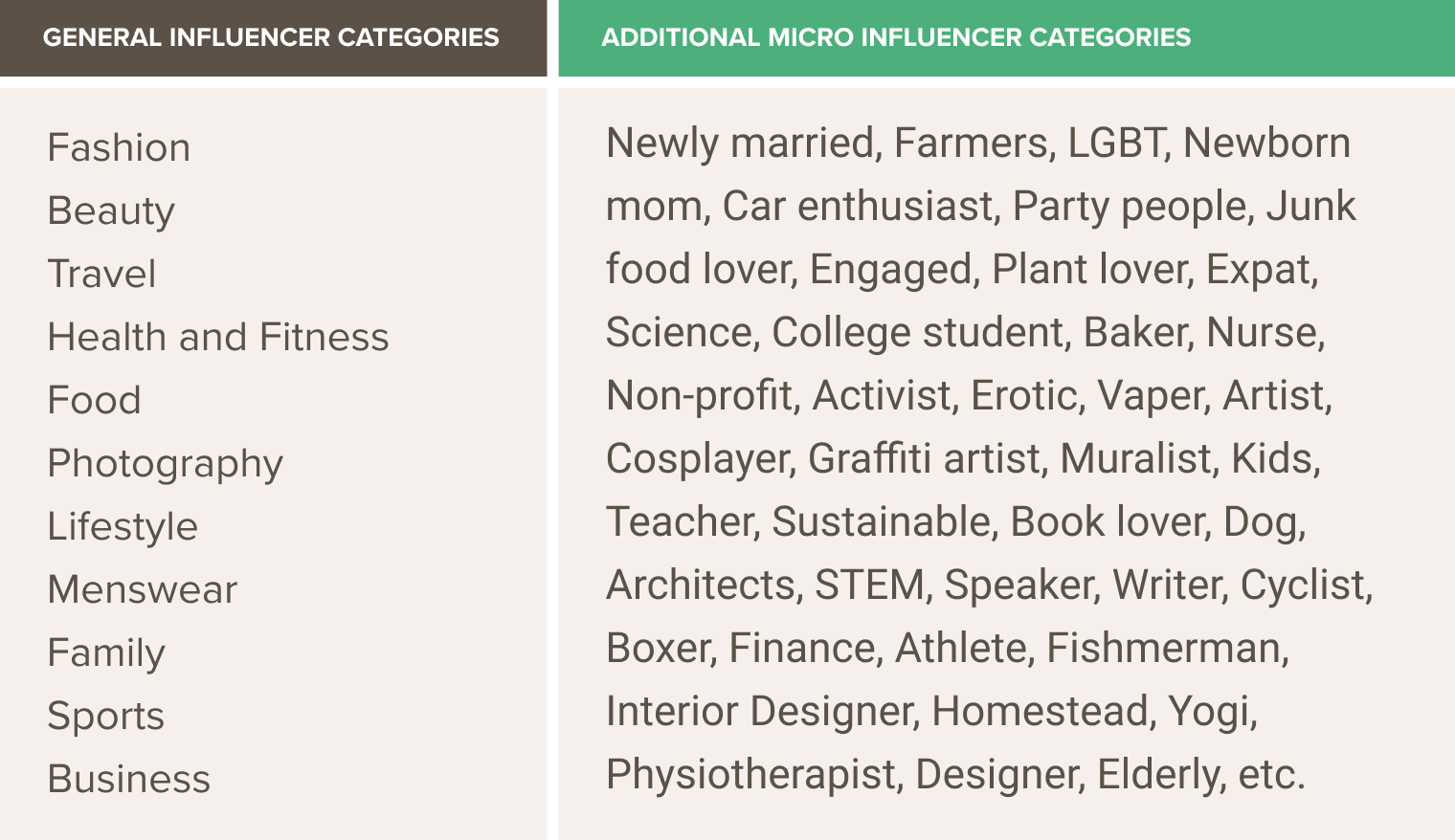
While micro-influencers are beneficial, it’s important to find the right influencers for your brand. You need to make sure their values and audience align with yours, which can be similar to finding a needle in a haystack. And if you struggle to find the right ones, you’re not alone: 41.4% of brands find it challenging to find the right influencers, and 21% of brands find it “very difficult”.
Sorting through users and finding the right influencer can be extremely difficult and time-consuming. This is where technology comes in.
The simplest and most effective way to find the right influencers is to leverage influencer marketing search tools. An influencer marketing platform like MightyScout has simplified the daunting task of finding micro-influencers. For example, if you have a handful of favorite micro-influencers who get you results, you can find look-alikes with just one single search in the tool. Doing this manually would take multiple hours without any guarantee of finding any good-fit influencers.

If you’re not yet ready to invest in a tool, there are some manual ways you can find micro-influencers for your brand.
One of the simpler but more time-consuming methods is to use industry and niche-related hashtags and keywords. Most influencers use hashtags and keywords to grow. You can take advantage of this and use the same keywords to find them.
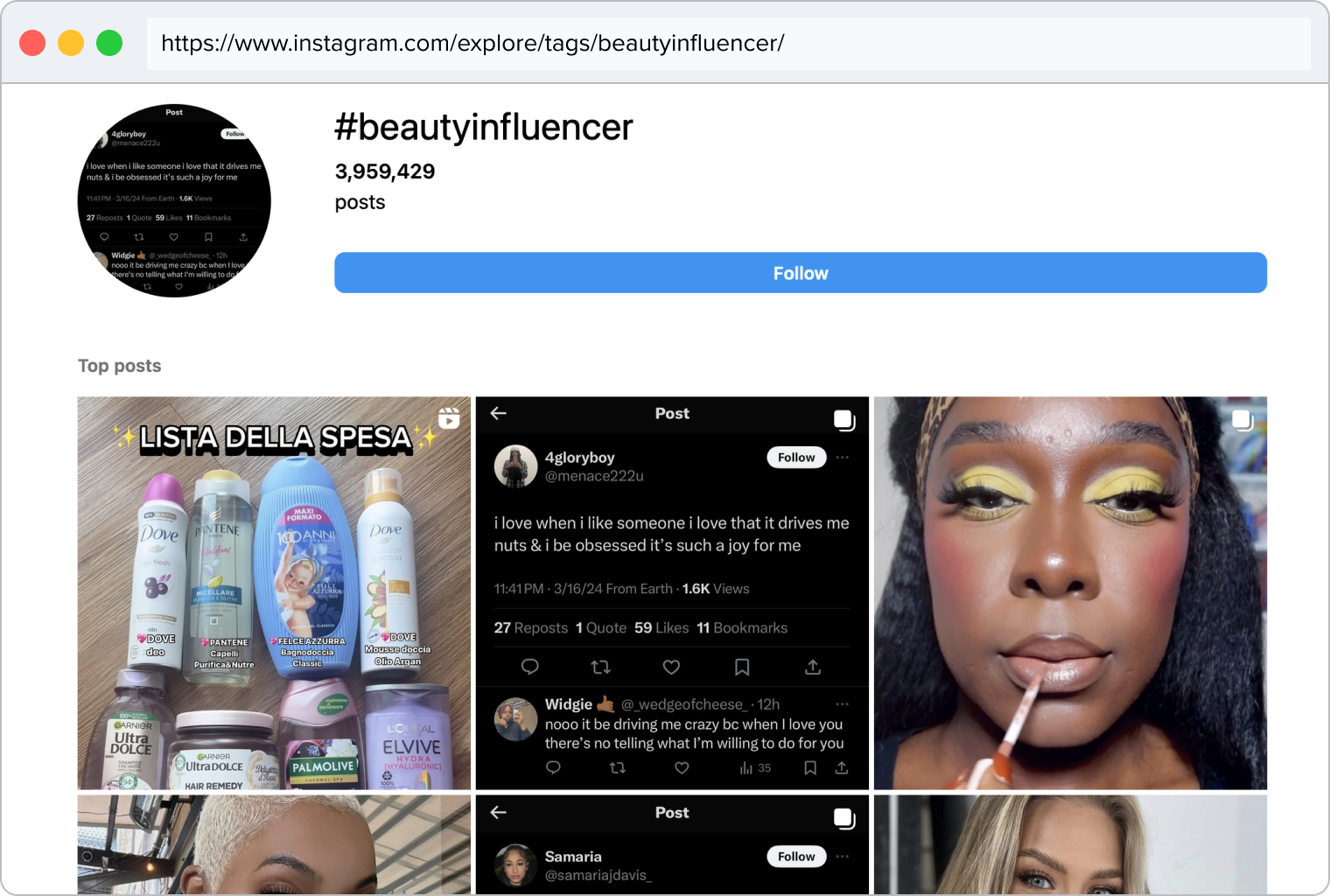
Micro-influencers are always on the lookout for good products and services they can share with their audience. Chances are, a few influencers might already be following you.
The best part: if an influencer is already following you, getting them on board and reaching out to them will feel much more natural. They’ll also be able to vouch for your brand authentically and convincingly.
The easiest way to do this is by keeping track of user-generated content created around your brand and products. If an influencer tags you in a story or post, it’ll be easy to find them.

If you’re looking to find an influencer who understands industry trends — and your audience’s pain points — and is knowledgeable in your niche, the best way to find them is via social media groups and forums like Reddit.
They won’t be difficult to spot here as they’ll usually be the most active and will regularly pop up sharing unique and helpful insights.
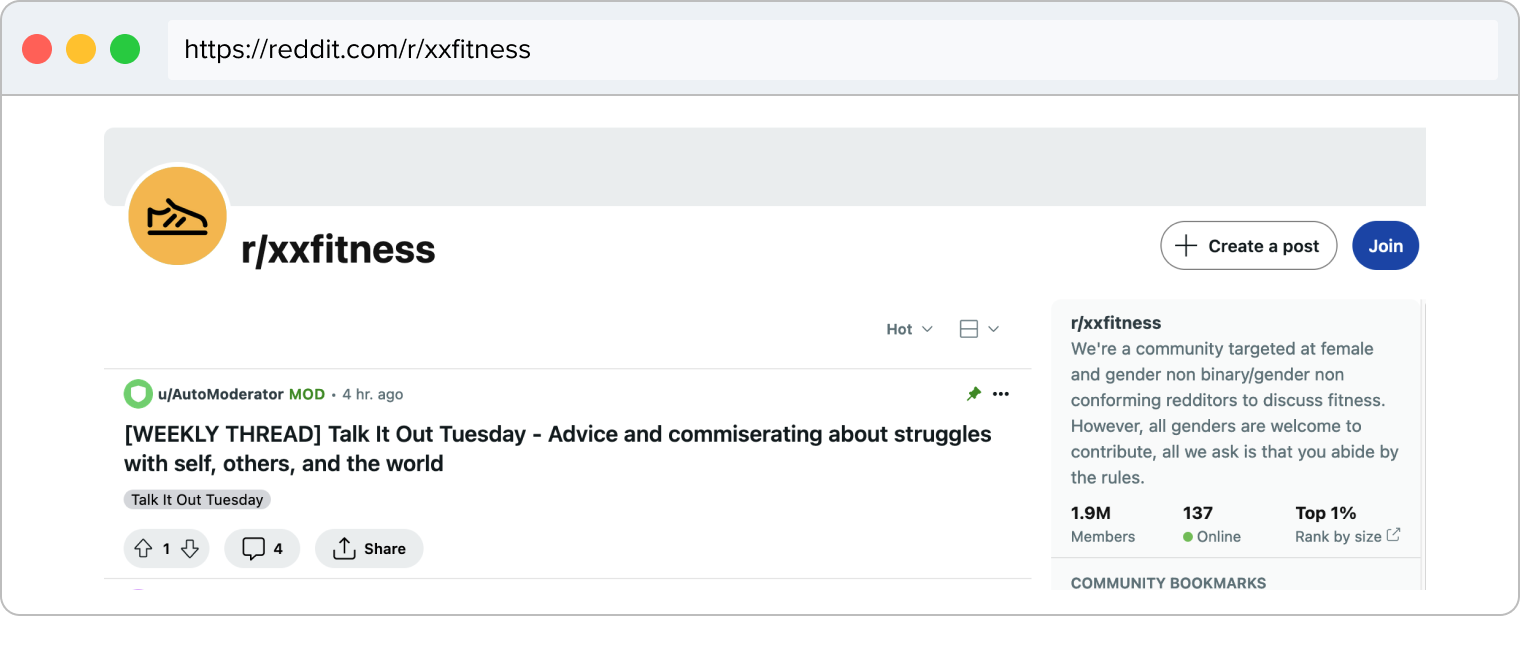
Asking your customers to recommend their favorite influencers can give you names you otherwise wouldn’t have considered. You can either use a question sticker on Instagram Stories or create a post on your chosen platform asking for recommendations. This will not only help you find relevant influencers, but it will also help you build a connection with your audience.
Competitors, like your customers, will help you in your research. Try looking at the tagged posts of your competitors and their Stories to see who they’re collaborating with. You likely don’t want to work with the same influencers as your competitor, but competitor research will help you identify the current trends, hashtags, and keywords, and you can see what type of content resonates in the category. You can use this data to differentiate your content and campaign.
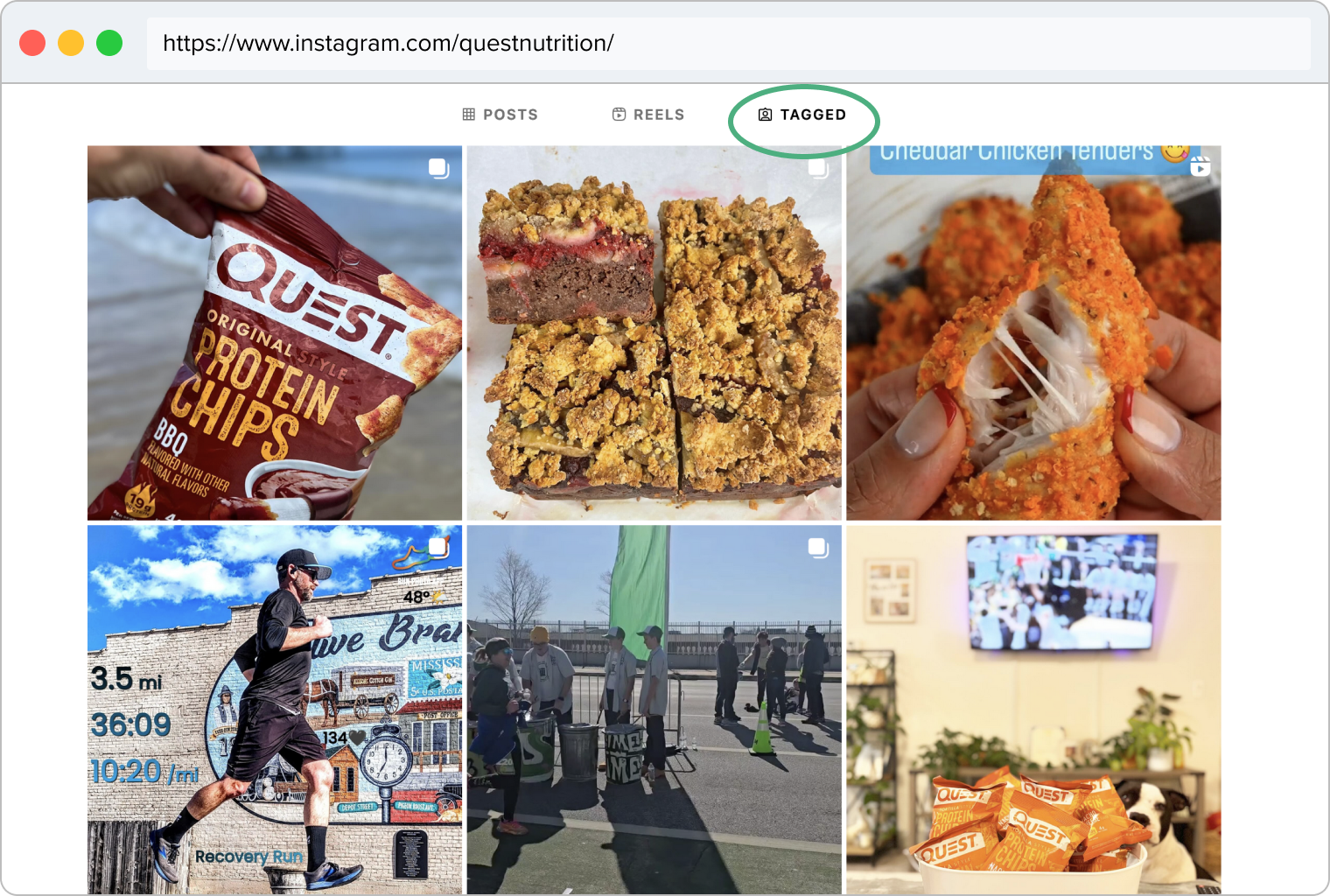
If you have an influencer you like, you can use social media platforms’ built-in features to find similar ones. For example, on Instagram, you can see recommended similar suggestions when you follow an influencer.
Although you can automate this type of search with a look-alike tool, when you’re just starting out you can manually search for similar influencers right within social media platforms.
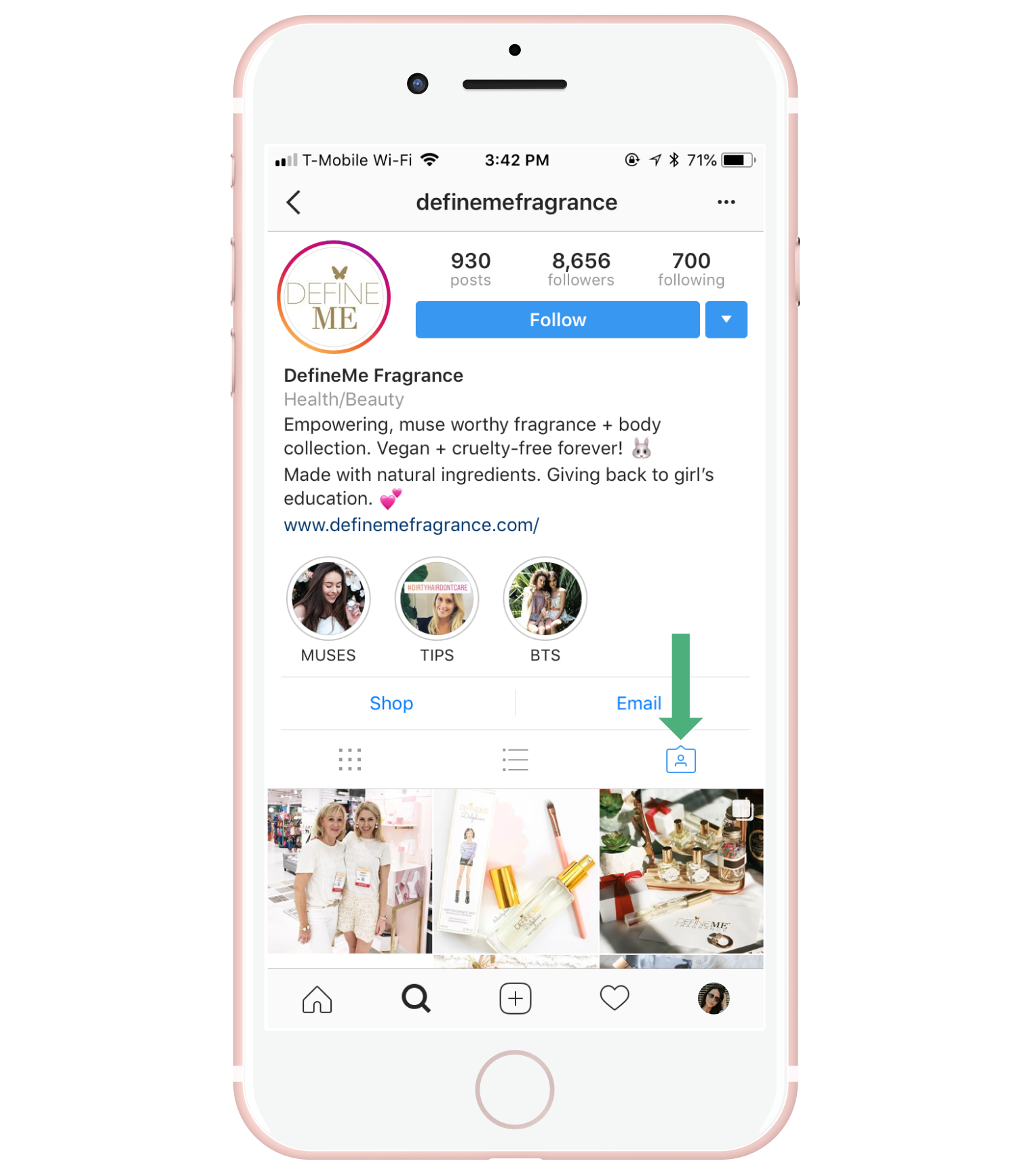
You can create a contest or a hashtag where you ask micro-influencers to create a short piece of content or simply invite them to collaborate. If you have a decent budget to invest, you can offer to send them a product for free.

There are several ways you can find the right micro-influencers for your campaigns. Here are some factors to keep in mind:
Before you kick off your search for micro-influencers, you need to set clear goals for the campaign. Without the right goals, it’s really difficult to generate results from a campaign because you don’t know what you’re aiming for.
The influencers you choose should align with your goals.
For example, if you’re looking to launch a new product that requires some audience education, find influencers who your audience trusts and relies on for information. An air purifier brand could collaborate with healthy living influencers to educate about the benefits of removing pet allergens or wildfire smoke from household air.
On the other hand, if you’re looking to make a viral post and drive some sales, your influencers should be making trendy content with a good conversion rate. Scrub Daddy has famously grown its sponge brand on trendy, relevant, and viral social media posts.
Or, if you need a ton of unique ad creatives to feed into Meta or TikTok ads, look for influencers who create highly engaging and authentic content. This is the approach used by Kynship, a performance marketing agency, to scale growth for Supergut, a gut-health brand.
Social media is tricky — a person can buy fake followers to attract brand deals. Or they may artificially boost their engagement rate by participating in engagement pods.
The best way to vet each micro-influencer for audience quality is to check their audience credibility score. The score is stated as a percentage of the audience which is likely credible. Keep in mind, most influencers – even those who have never purchased followers – will have some questionable followers. This is typically bot activities that they have no control over. So a score of 80% or more is not suspicious.
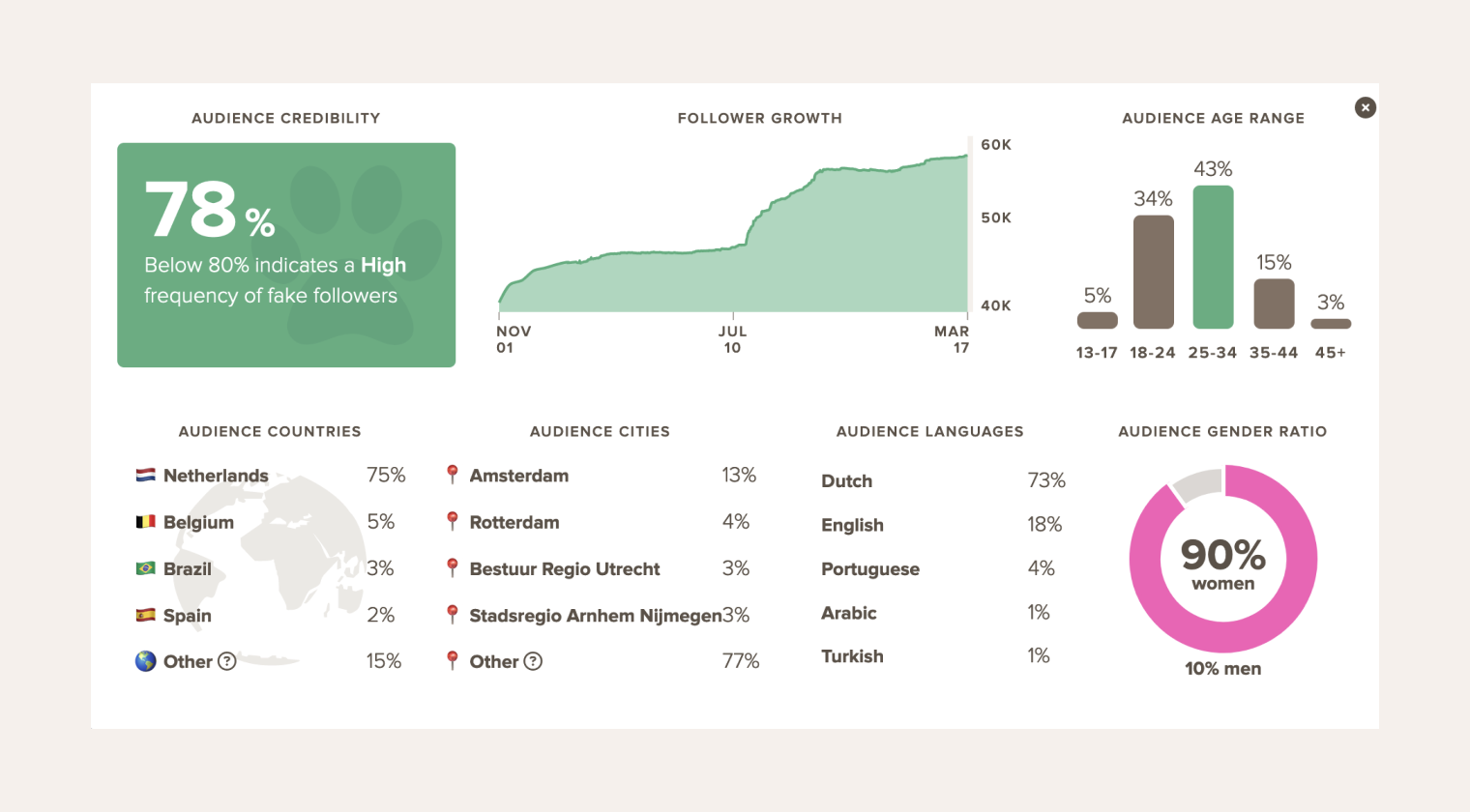
Also check their follower growth trendline for sudden spikes. What you want to see is steady growth here. If you see a sudden spike in growth, the question to answer is what caused the surge of followers? Did it come from a viral post? We’re they mentioned by someone famous? Did it come from the purchase of fake followers? Fake followers don’t engage. So the combination of low engagement and suspicion of fake followers together are a red flag!
Next, check engagement quality. One method is to look at their likes-to-comments ratio and have a benchmark for what is in the normal range. Also look at their recent engagement rate over the past 12 to 16 weeks to make sure they are still actively engaging.
Then, look at the comments with your own eyeballs. Is the influencer actively responding to comments? Are the comments natural and thoughtful? Or are they bot-like (lots of emojis or comments that are not specific to the post)? Are the comments what you might see from an engagement pod (i.e., too good to be true)? “Oh I was just waiting for a recommendation for a new vitamin. I’m going to go buy a dozen bottles right now.” Brands catch on to this when they don’t see the sales associated with the comments.
Just because an influencer has a lower number of followers, doesn’t mean they aren’t creating good content. Quite the opposite can be true. In terms of content quality, check to see if the influencer is earning likes, comments and shares from their followers. Is their audience growing? Are they posting regularly?
You also need to consider the influencer’s values. If you sponsor the “wrong” influencer, you can damage your brand reputation. A quick scroll through the influencers posts will help you check if their values align with your brand’s values. For example, many large household brands avoid working with influencer accounts that show nudity, sexualized content, illegal drugs, illegal activity, and highly controversial or polarizing opinions.
Knowing what your brand stands for, where do you draw the line on an influencer’s content?
If an influencer meets all the criteria, make sure you set expectations clearly and create a contract. This is easy with an app like MightyScout, but if you’re doing it all manually, you might miss some of the finer details — like publishing cadence or how you’d like an influencer to refer to your product — which could have an impact on your campaign.
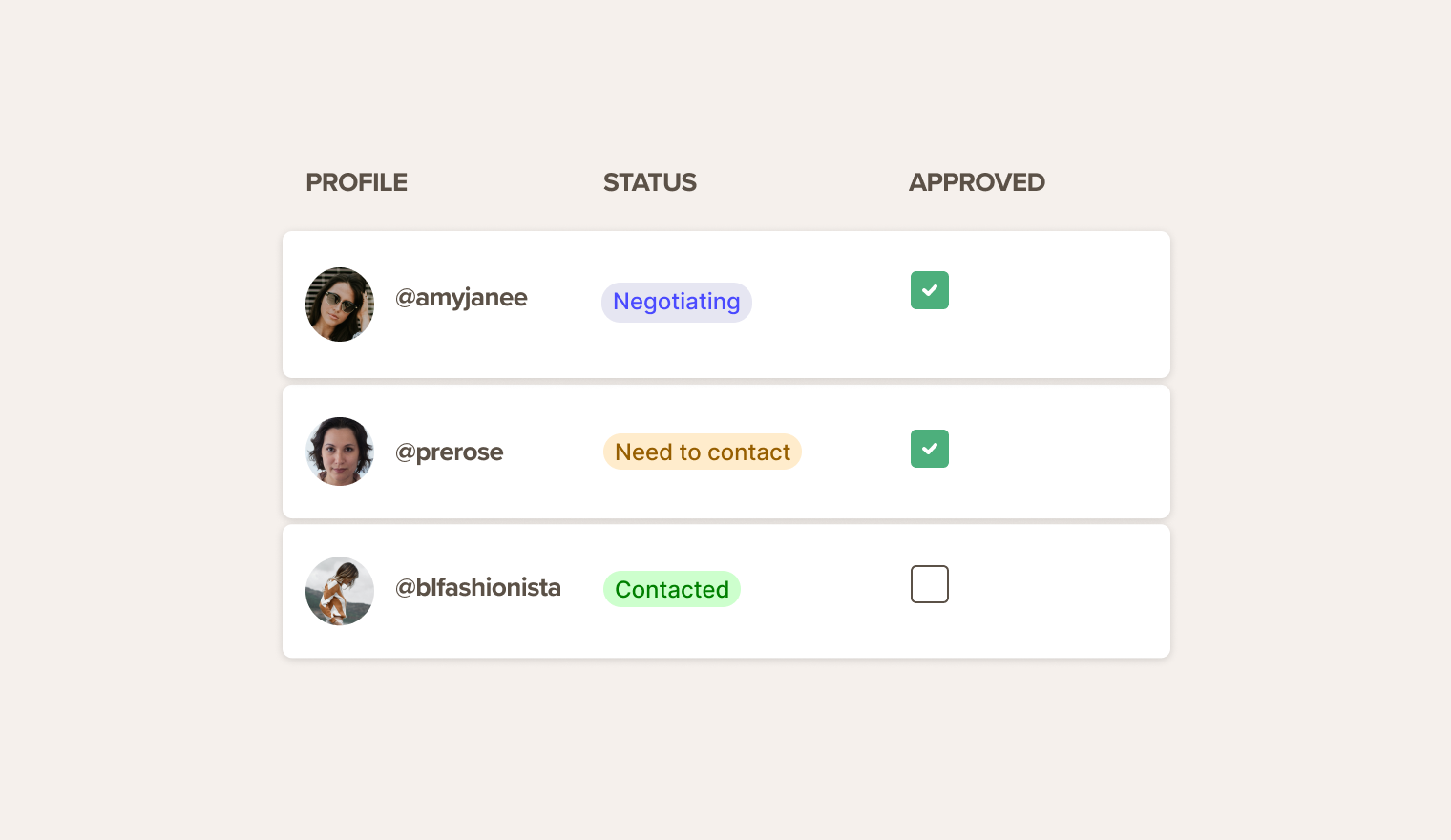
To avoid this, create a checklist and brand document that you can share with influencers so both parties know what to expect.
Like any other campaign, you need to measure the performance, including which influencers got you the best results. This way, you can not only repeat the campaign, but you can also identify what type of content performed the best and who you should work with again.
When influencers create amazing content for you, you can continue with an affiliate or ambassador relationship.
This becomes a lot easier when you leverage technology and tools that can do it for you. For example, MightyScout creates a report dashboard where you can get a snapshot of the entire campaign in one place, from the ROI to the content posted.

According to Influencer Marketing Hub, you can expect to pay between $100 to $500 per post for a micro-influencer with 10,000-50,000 followers.
While that’s quite a broad range in pay, each influencer is different and the rates may vary based on the following factors:
You’ve found the perfect micro-influencers to work with — but that doesn’t mean they’re available or interested in a partnership with you. Micro-influencers often remain true to their brand and are authentic. The best influencers get picked up early on. You need a game plan to reach out to them and successfully convince them to work with you.
To give your pitch the best chance of landing well, it helps to:
Start conversations and interact with the micro-influencer on their feed before you reach out to them so they know who you are.
Personalize your outreach to include their name and a mention of something unique to their account. That way, they’ll know they’re not just a part of a mass outreach but hold value for your brand. Here’s a template you can use:
Hey (name), I’m (your name) from (brand). We’ve loved following your content and think your content creation aligns with our brand’s (value name). You might like to try our product as it’s in the same niche as yours. Where can I send it to? No strings attached!
When reaching out in the DMs, make sure you include who you are, why you’re reaching out, and the reason why the influencer should work with you.
Sending a free product sample (also called product seeding) lets the influencer try it out to see if they like it and are willing to share it with their followers.
Tip: Curate an influencer product package that’s well-decorated with a handwritten note. This will increase the probability of the micro-influencer posting the package as a Story, giving you a promotion for free.
This interaction can be the start of a relationship with a micro-influencer. If they love your brand and choose to post about it, you can build on the relationship from there.
Social media is no longer about how many followers you have, it’s about creating deeper connections that have a lasting impact. Today’s consumers crave authenticity and micro-influencers provide just that. Micro-influencers bring you closer to a niche audience, helping your brand image and eventually your reach and revenue.
Create your next micro-influencer campaign with MightyScout, which helps you find the right influencers, manage your campaigns, and track your results. Book a free demo today.